America’s infamous and highly illegal Cannonball Run was launched to celebrate the life of a serial record breaker. And it turns out George Cannon Ball Baker’s first love was motorcycles.
The first race to be held at the then brand-new Indianapolis Motor Speedway was held on 14 August, 1909. Held over a distance of only 10 miles (16km), in a time when riders were used to racing on timber board tracks, the combination of broken limestone and asphalted oil interspersed with sharp stone residue to improve traction left the 30 entrants less than impressed. This was reduced to downright disappointment when 26 of them suffered flat tyres before seeing the chequered flag.

But what the race lacked in numbers, the last four riders made up for in determination and a battle ensued.
It was a battle that ended 11m31.2s after the starter’s gun and it was won by a 27-year-old factory-backed Indian rider named Erwin George Baker, who was signed by the Springfield team a few months earlier after riding his private Indian into the record books.

A round trip of 22,500km
Although the factory insisted Baker competed in more motorcycle races, Baker’s love was racing passenger trains between cities. At the time, locomotives were more or less seen as the fastest vehicles on the planet, although in 1907 Glenn Curtiss reached speeds of 220km/h on his 4400cc V8 motorcycle on the sands at Florida’s Ormond Beach, so he knew high speed was now possible on a motorcycle.
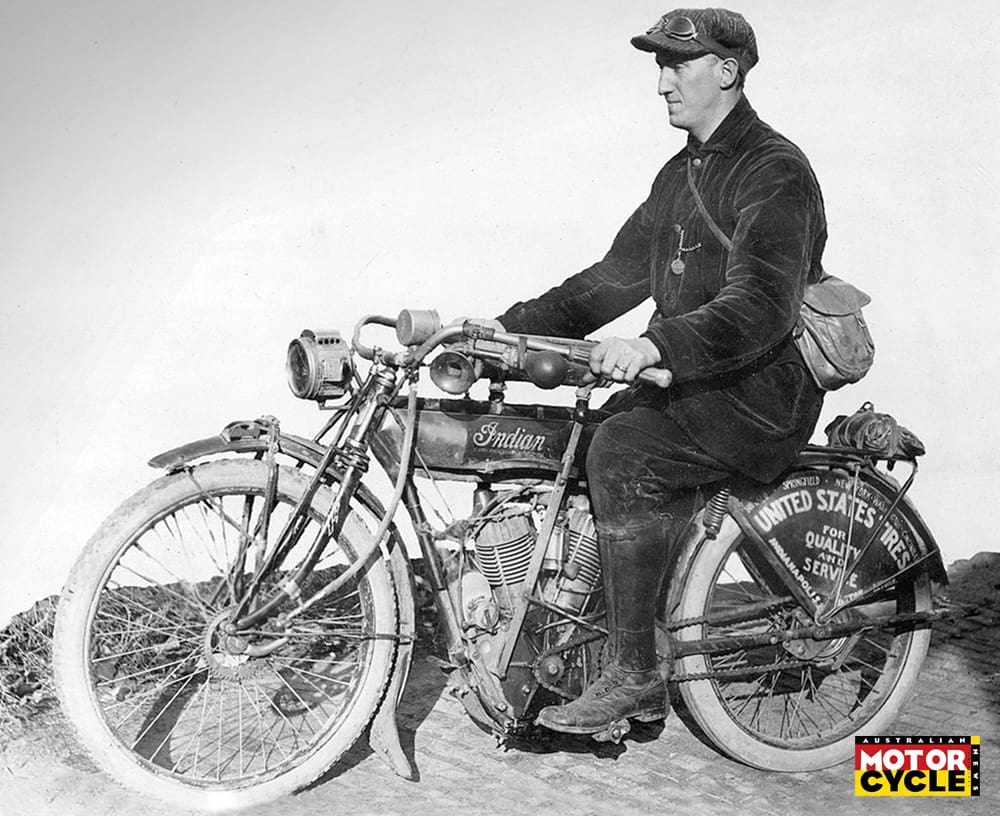
Baker rode a 1000cc Indian cross country in 1909
Indian didn’t mind Baker’s penchant for chasing trains. Trains traversed some pretty inhospitable territory and it prided itself on the fact that Indian motorcycles had a reputation for being indestructible. Imagine the sight of tall, skinny rider aboard a motorcycle, fighting the landscape and the elements as he chases down a steam train speeding resolutely along its sturdy tracks. Through harsh weather and wind, through mud, forests and fields, Indian realised very well that a man and machine who could withstand these hellish torments so brilliantly was a spectacle which attracted attention.
In 1912, Indian co-founder George Hendee approached Baker to tour Central America to promote the new 7hp V-twin with a two-speed gearbox. And when Baker returned later that year, he became the first person ever to have visited all of America’s then 47 states on one motorcycle, covering no less than 22,500km in the process. Almost immediately after his arrival in the state of Georgia, Baker entered his Indian V-twin in a 300-mile national championship race, such was his taste for speed and long distances.

5500km race
Two years later Baker lined up in a race that started on the west coast of America and ended 5500km later on the east coast. And after 11 day, 11 hours and 11 minutes, Baker emerged the winner. But it was tough going, some days he hallucinated from the heat and exhaustion, but still he persevered. Sealed roads were a rarity – of the 5500 kilometres raced, only six of them were on sealed roads. And through the 110km of the most inhospitable parts, he rode between the tracks of a railroad.
To give you an idea not the bloke’s determination, his winning time was a full nine days faster than the previous motorcycle record and four days quicker than the record held by a car. The rides were dangerous, not only because of the rugged nature and the less reliable motorcycle technology compared to contemporary standards, but also due to wild animals and other dangers. In those days, some parts of the US were still quite lawless. Erwin therefore always raced armed and always carried a hand weapon in his pocket.
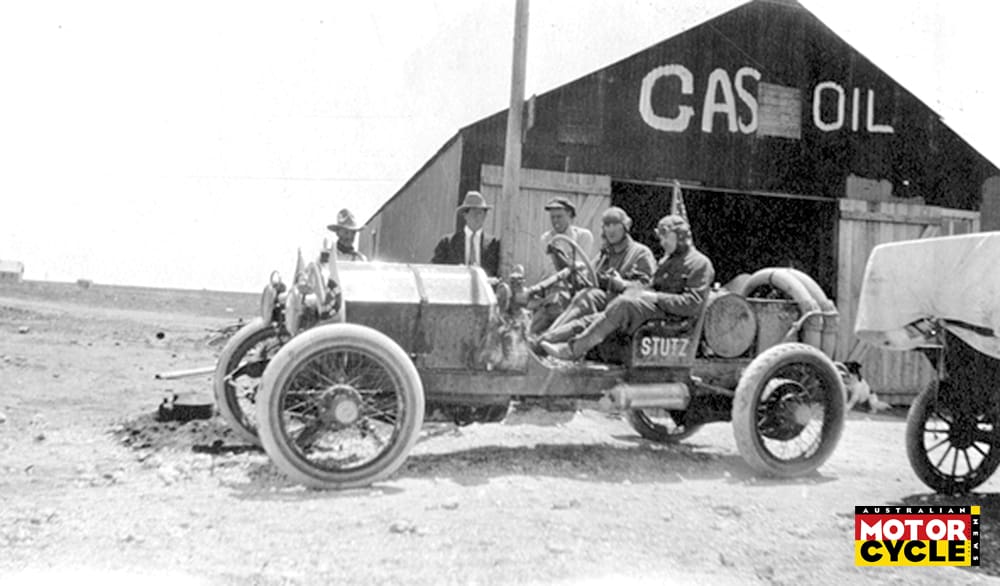
His great fame came when he also started doing rides like this with four-wheelers. That was thanks to Harry C. Stutz, the founder of the Indianapolis Stutz Motor Company. Stutz approached Baker in 1915 to see if he had any interest in crossing America in a Stutz Bearcat car. Baker thought that it might be a fun challenge and drove about 4300km from coast to coast in 11 days, seven hours and 15 minutes. Keep in mind that lack of marked roads, Baker overcame quicksand and drove huge distances across the endless prairie from the west to the east of America. Bloody quick in those days.
He garner much acclaim in the press, who compared him to the fast Cannonball Express trains that most railroad companies were using between popular destinations. And so his nickname ‘Cannon Ball Baker’ stuck. He preferred the space between cannon and ball, purely to distinguish himself from the trains. Later he would take copyright on this name.
The rise to racing
But how did George Cannon Ball Baker get involved in motorsport in the first place? To answer this, we need to go back to a March day in 1882, to a wooden log cabin near the town of Lawrenceburg in the state of Indiana. The Baker family did not have much and was looking for a better life.
When Erwin was 12 and – in the eyes of his parents – old enough to work, they left for the city of Indianapolis. For 88 cents per 10-hour workday, he found a job in the steel industry at the Indianapolis Drop Forge Company. The work was monotonous and mind-numbing and he quickly understood that this could be his prospect for a very long time. To make his days less boring, joined an acrobatic group in 1905 and visited gyms fanatically. It was an important time for Baker, it was where he discovered the power of good PR by promoting and performing special stunts. In the meantime, he developed into an accomplished cyclist and athlete. He also liked boxing and wrestling.
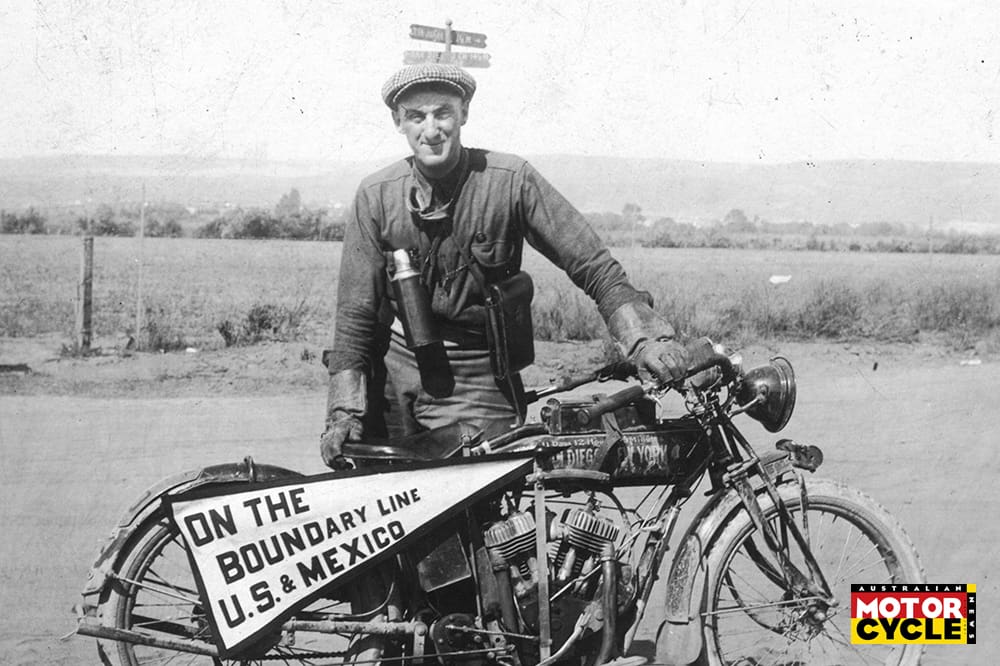 Cannon Ball Baker and an Indian Powerplus 1000cc V-twin in 1915
Cannon Ball Baker and an Indian Powerplus 1000cc V-twin in 1915
But his performing career ended abruptly when he bought an Indian motorcycle in 1906. He fell in love with speed and he couldn’t spend enough time riding the Indian. It was not long before he started participating in board track racing, but also in long-distance events between American cities. On 4 July, 1908, American Independence Day, he and his Indian won his first motorcycle race in Crawfordsville, Indiana. From that moment on, the Indian factory kept an eye on Baker and soon realised he had enough talent to join its factory team. That happened in 1909, not too long before the very first race on the Indianapolis circuit. But it did not stop there, during his impressive career in motorsport, Cannon Ball Baker won 53 races, took 23 stage classifications and broke 11 American speed records. He remained a factory driver with Indian until 1924.
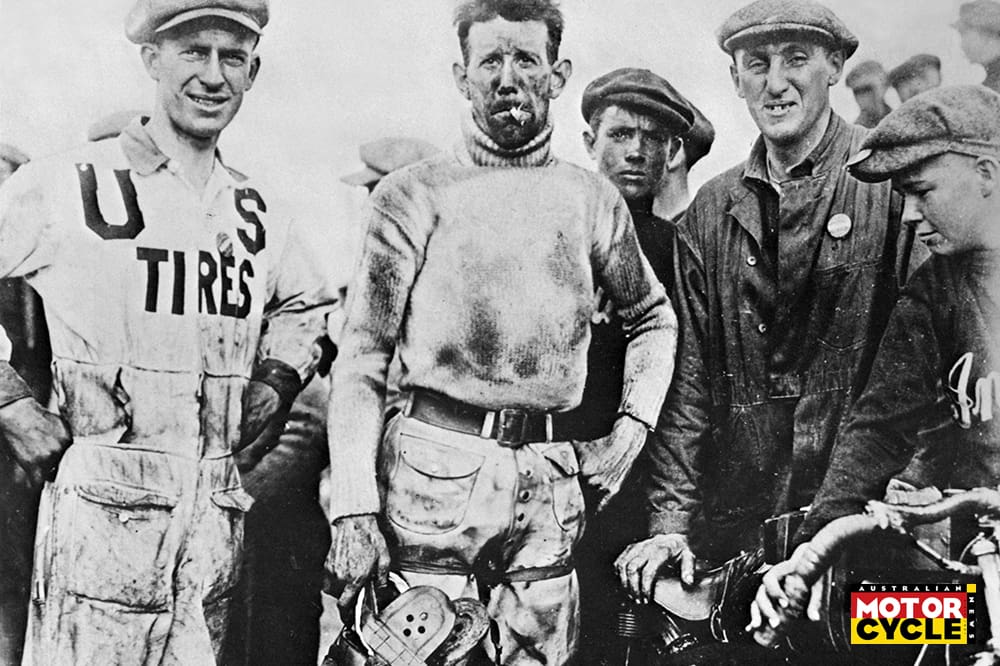 Cannon Ball Baker (second from right) 1915
Cannon Ball Baker (second from right) 1915
Up for the challenge
In 1916, Cannon Ball Baker improved his own coast-to-coast record by as much as four days. This time with a Cadillac. During that period, his advertising slogan claimed: ‘no record – no money!’ Interest in his was sky high, and he broke records for dozens of manufacturers.
One of his most famous was his ‘Three Flags Tour’, from British Columbia in Canada, through America and down to Tijuana in Mexico. He made the run several times with Indian. In 1916, with the brand-new 1000cc Powerplus V-twin mode when he had to reroute three times due to forest fires. Despite this, he still managed to finish his ride in two days and five hours. To promote Indian, he also traveled to continents overseas. In Australia and New Zealand, he excited event promoters with his plans to break speed records, including city to city races. The result was an impressive series of Australian and New Zealand national speed records. After World War I, he made a monstrous ride through all the capitals of America’s 48 states of the time. Allowing himself only four hours sleep a day, it took him 78 days, 18 hours and 33 minutes to cover a distance of more than 26,000km.
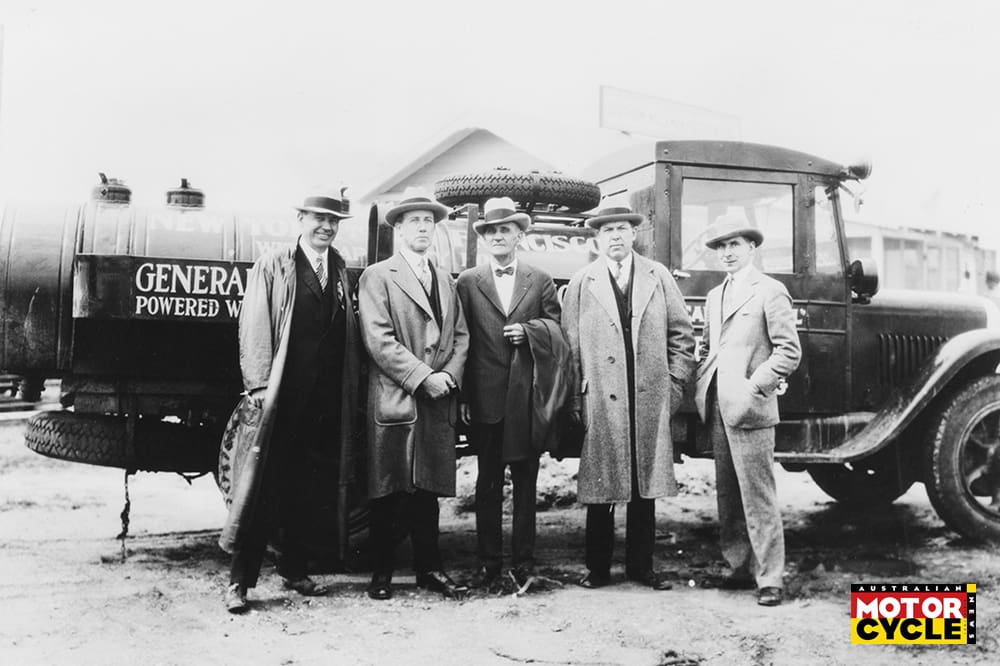
He went looking for more challenges and so took on mid-winter records, for example, or the time he toured America with an Oldsmobile using only the highest gear. He also carted seawater from the Atlantic Ocean to the Pacific in a GMC truck – in just under six days. In 1922, at the request of Henry Ford, he returned to the Indianapolis Motor Speedway, where he finished 11th in a 200-lap race with a Fontenac racing car.
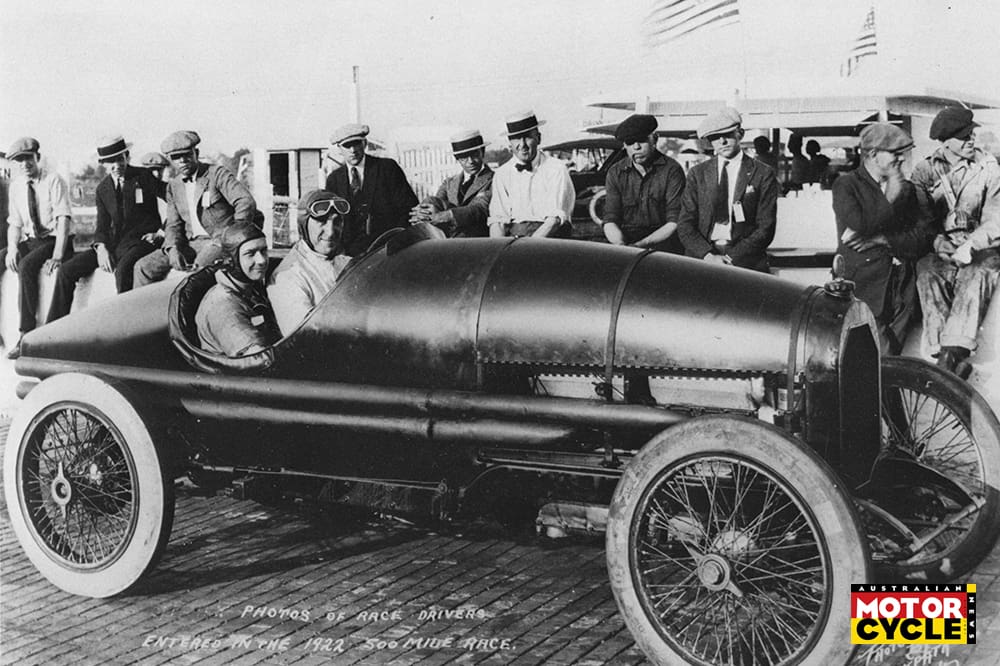 Baker behind the wheel of a Frontenac at Indianapolis in 1922
Baker behind the wheel of a Frontenac at Indianapolis in 1922
But he made history when in 1928 he beat the super-fast train between New York and Chicago, a huge achievement given this particular train was the pride of the American locomotive industry.
Changing times
But times began to change. More and more roads were sealed, local police and state police began carrying out speed checks and punishments for people breaking speed limits increased. So in 1933, Cannon Ball Baker decided to go for one more all-or-nothing run from coast to coast in an eight-cylinder supercharged Graham Blue Streak Model 57 car. He did it in an insanely fast time of only 53 hours and 30 minutes, which equated to a non-stop average speed of over 80km/h. And this at a time when roads – let alone sealed roads – were still rare.
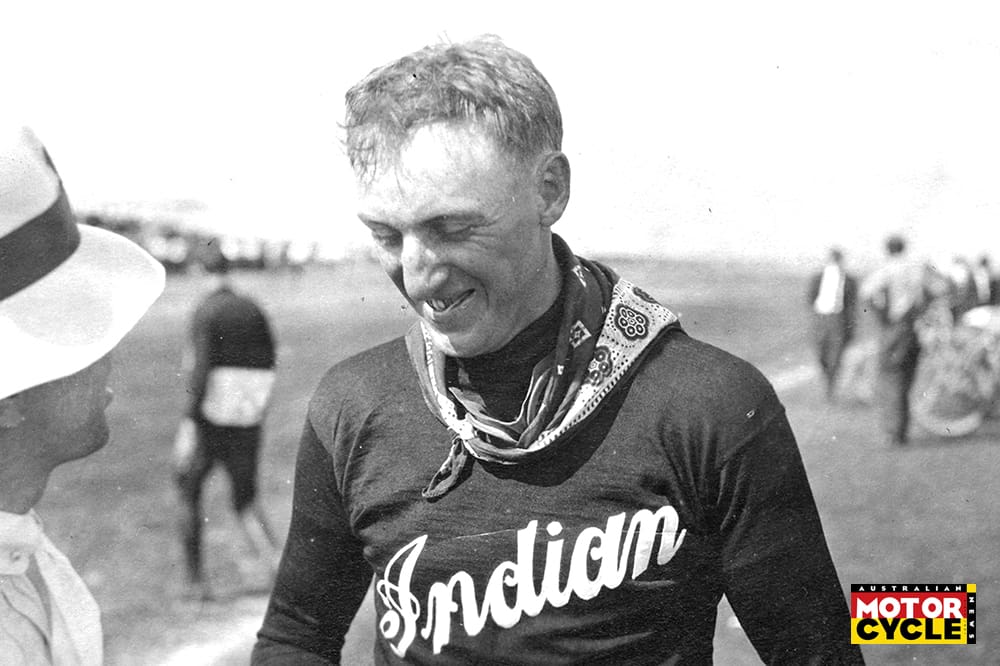
After 1933, he decided to take it easier on his monstrous long-distance runs and concentrated on a career as a test driver for manufacturers and worked for a while for Rickenbacker Automobiles, owned by World War 1 fighter pilot Eddie Rickenbacker. But Cannon Ball Baker never forgot his love for two wheelers, and so started to focus on thrift riding, which was making runs using the least amount of fuel. He made a thrift ride for Ner-A-Car of more than 5400km returning an average fuel consumption of just under 3L/100km.
He was also technically educated. He worked on his own motorcycles himself and, when he was 60 years old, designed an experimental single-cylinder Wankel engine block in 1941 and mounted it in the frame of his Indian Sport Scout. Once finished, he jumped on it and rode from Los Angeles to New York City in a time of six days, six hours and 25 minutes.
His legacy
When NASCAR was founded on 21 February, 1948, Cannon Ball Baker was one of its very first board members. Throughout his life, he continued to engage in motorsport, until he died of a heart attack on 10 May, 1960. His tombstone in the Crown Hill Cemetery in Indianapolis proudly reads his nickname: Cannon Ball Baker.
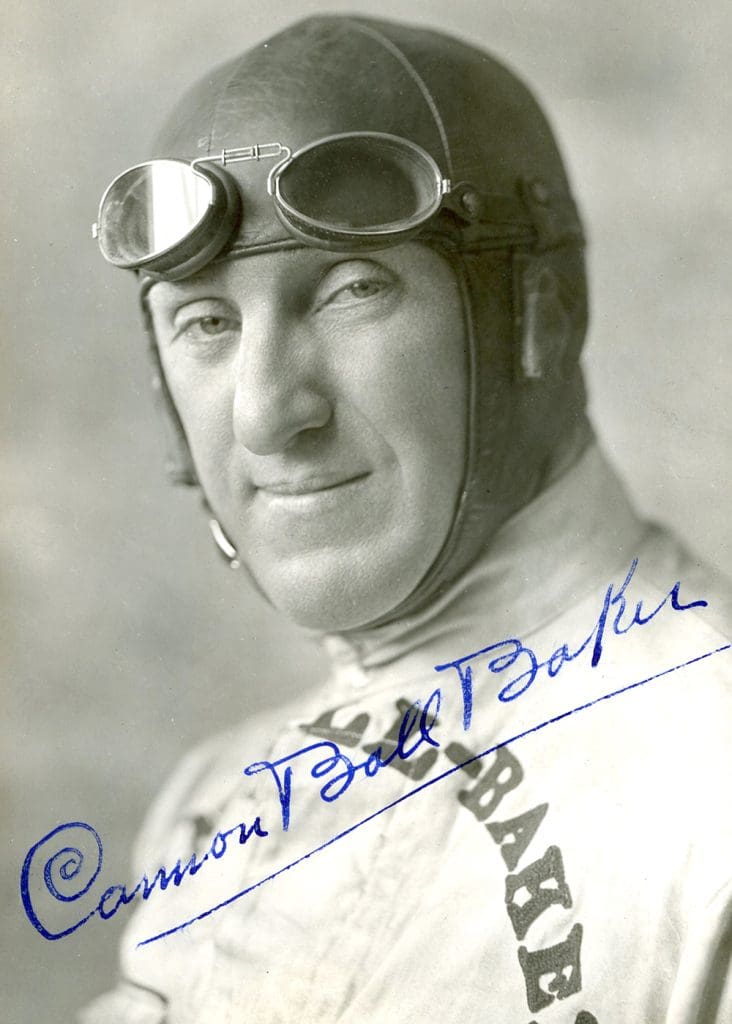
No one has been as fanatically engaged in long-distance rides as he had been. During his lifetime, he set no less than 143 different long-distance records. Which is why in 1971, 11 years after his death, race car driver and journalist Brock Yates launched the Cannonball Run, an outlaw rally named after George Cannon Ball Baker. Inspired by one of motorsport’s biggest characters, the highly illegal and much sought after Cannonball Record is still being chased to this very day. Just as Erwin George Baker would want it.
The race today
At least someone was loving the lockdowns
As Americans retreated into their homes during the outbreak of Covid-19, Cannonball Run enthusiasts were making the most of the quiet roads. In fact, by the end of 2020 reports were saying the record had been broken seven times in just five weeks.
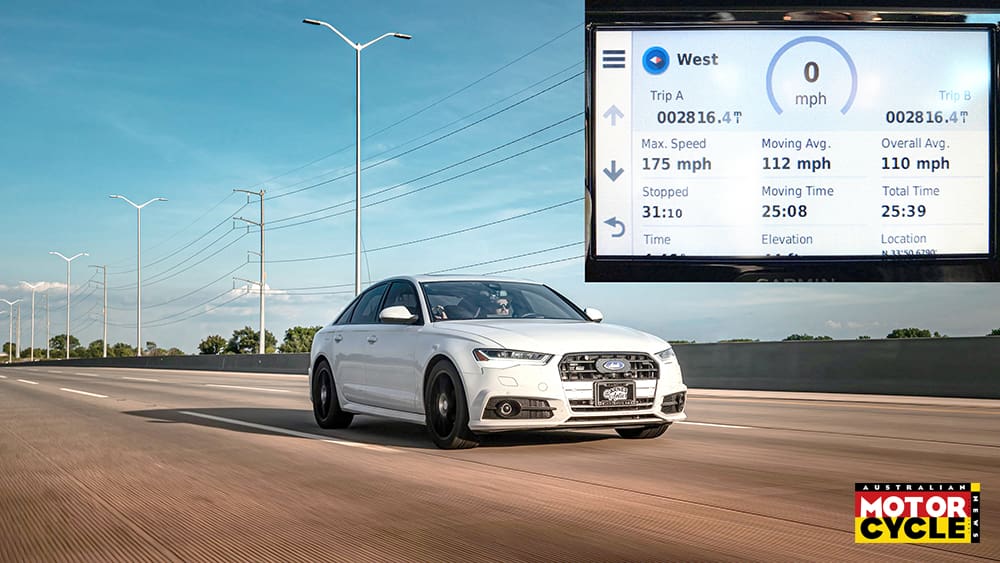
The unwritten rules of the unsanctioned race state that in order to set a record, you must start at the Red Ball Garage in Manhattan and finish 4677km later at the Portofino Inn in Redondo Beach, California. In 1915, George Cannon Ball Baker completed a similar journey in a Stutz Bearcat in a time of 271 hours and 15 minutes. Today’s record, set in a highly modified but thoroughly inconspicuous 2016 Audi S6, stands at 25 hours and 39 minutes. With Arne Toman and Doug Tabbutt at the wheel and with Dunadel Daryoush as spotter, they drove at an average speed of 180km/h, their Audi had a fuel capacity of 250 litres and were stopped for a total of 31 minutes.











